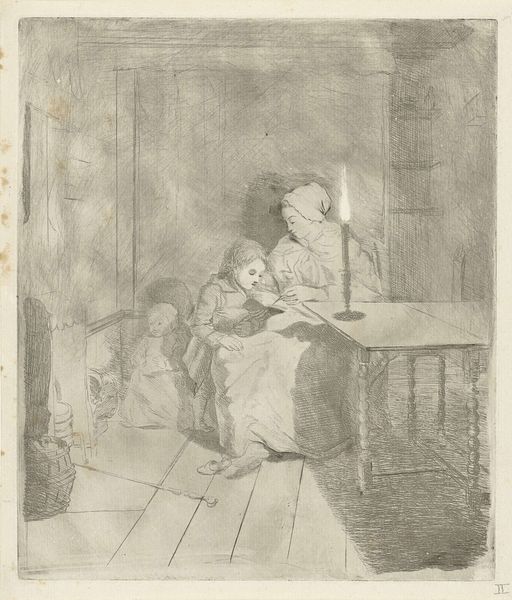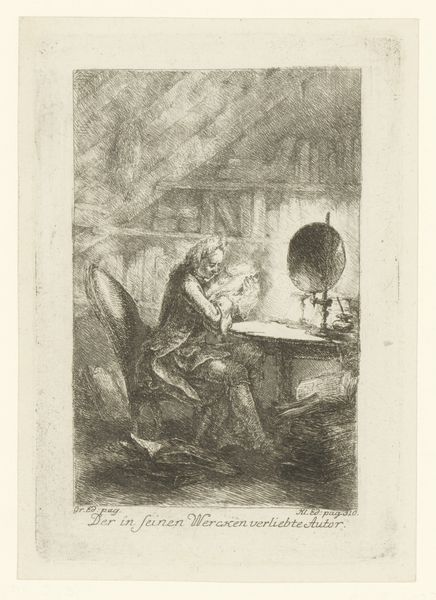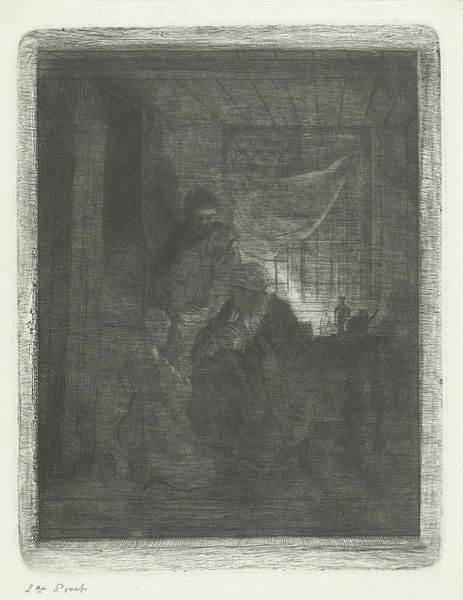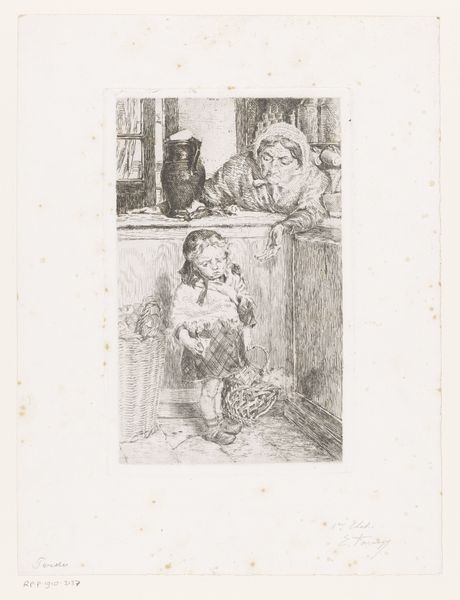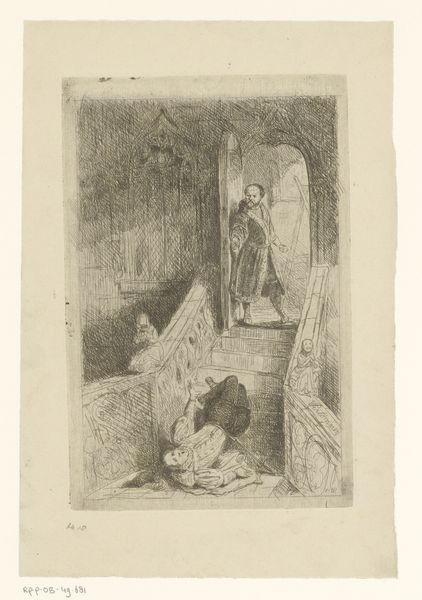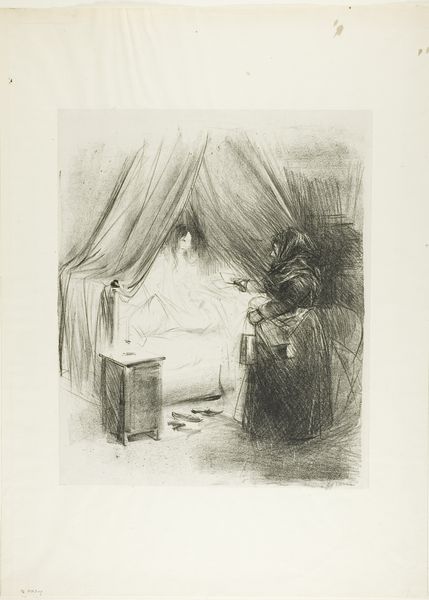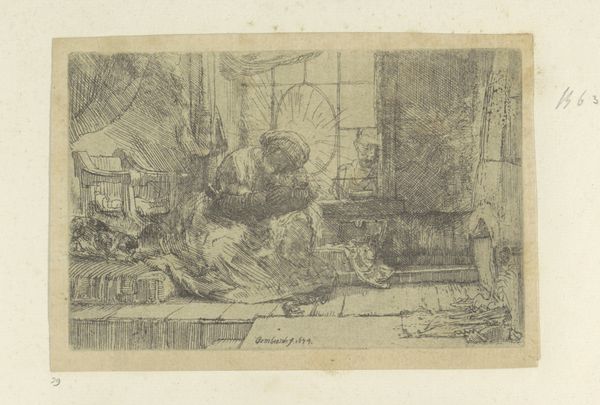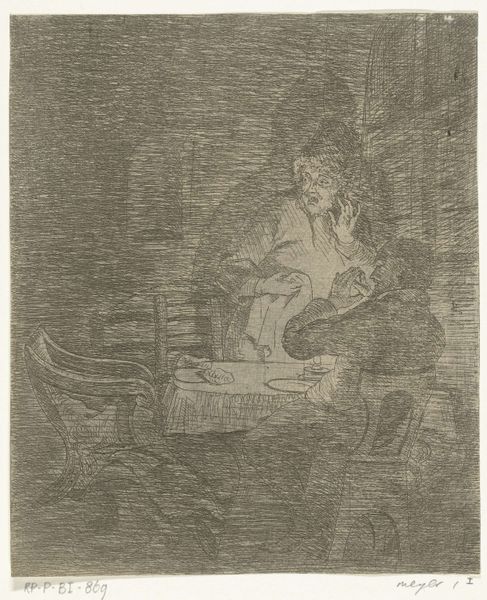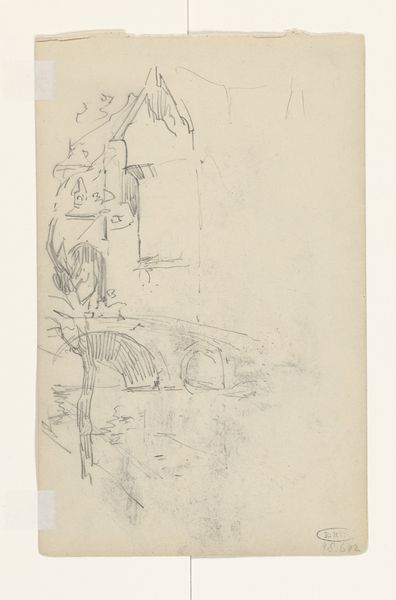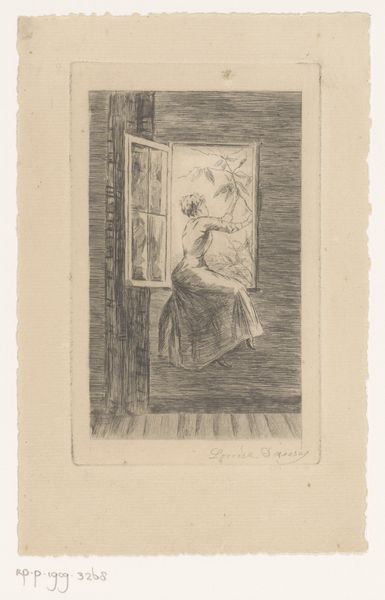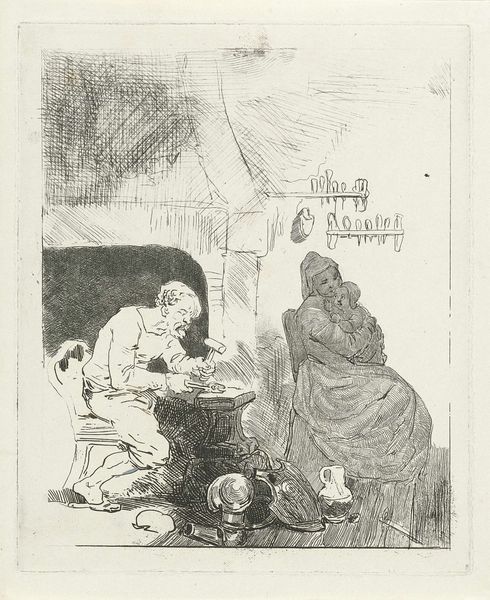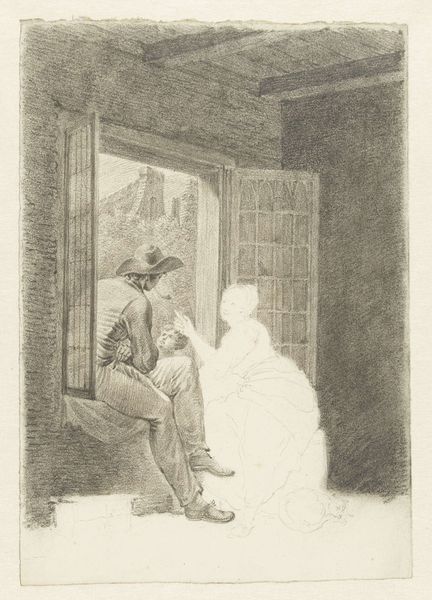
drawing, paper, pen
#
portrait
#
drawing
#
paper
#
intimism
#
pen
#
genre-painting
#
academic-art
#
realism
Dimensions: height 270 mm, width 230 mm
Copyright: Rijks Museum: Open Domain
Curator: Here we have "Moeder geeft haar zoon les," or "Mother Teaching Her Son," a pen drawing on paper attributed to Louis Bernard Coclers, dating sometime between 1756 and 1817. Editor: The scene feels remarkably intimate; the limited light source really draws my attention to the figures clustered around the table. There's something inherently domestic about this image that speaks volumes, even without vibrant colors or detailed brushwork. Curator: Indeed. Coclers was known for his genre paintings and portraits, and this drawing reflects a common theme during that era: the importance of domestic education and moral instruction within the family unit. These images served as both records of daily life and also didactic tools for societal expectations. Editor: From a material perspective, it's interesting to consider the simplicity of the medium. A pen and paper, yet with it Coclers illustrates a world—its inhabitants, their tasks, the way the light falls. Look how the hatching suggests texture, how quickly he can articulate material like wooden planks in the table simply with cross contour. Curator: Right. This level of detail shows both Coclers’ skill and the significance of his choice to portray an ordinary scene. Remember, art academies were solidifying during this time, standardizing artistic techniques. It subtly pushes back on the idea that history paintings and mythological scenes are inherently superior, arguing, perhaps, that everyday life holds just as much artistic and cultural value. Editor: I agree; it democratizes art and shifts focus to laboring activities—in this case, intellectual, domestic labor of a mother teaching her son. Also note the subtle gradations. How did he work so softly on paper with such stark tool? It begs one to question how often academic life celebrated labor in art, or merely romanticized the process? Curator: Interesting question. While the academies were interested in representing virtue, one must consider if such representations always consider all audiences. Perhaps this explains why the work appears to embrace both Realism and Academic art practices in its construction of motherly affection. Editor: Absolutely, but let's not disregard the undercurrents of how the labor manifests as technique here. After studying the materials of its construction and appreciating it for its capacity to express real affections in private domesticity, one feels richer having witnessed this art piece. Curator: Very well put! Thank you for providing an analysis that expands on its material implications. This discussion gives visitors much to consider concerning class, pedagogy, gender, and technique during the Age of Enlightenment!
Comments
No comments
Be the first to comment and join the conversation on the ultimate creative platform.
